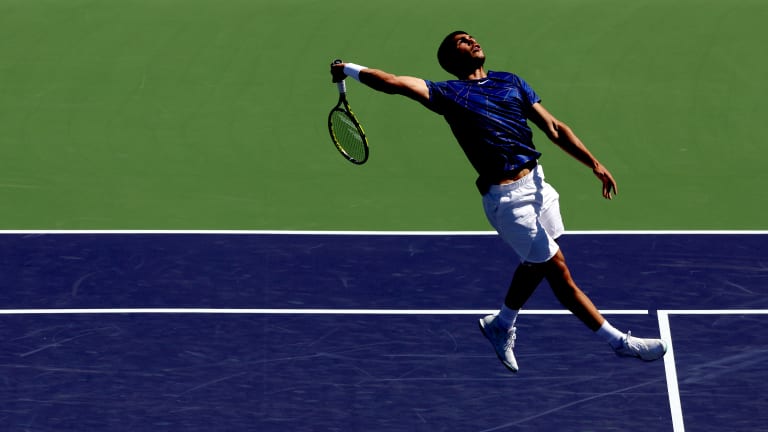Indian Wells, USA
Carlos Alcaraz leans into physicality, versatility and poise to dismiss McDonald at Indian Wells
By Mar 12, 2022Indian Wells, USA
Mackenzie McDonald is paying the college tennis experience forward with a new fund
By Mar 17, 2025Indian Wells, USA
Mirra Andreeva and Jack Draper win breakthrough titles at Indian Wells: What did we just witness?
By Mar 17, 2025Indian Wells, USA
Jack Draper's run through Indian Wells concludes with his first ATP Masters 1000 title
By Mar 16, 2025Indian Wells, USA
Holger Rune vs. Jack Draper: Where to Watch, Indian Wells Preview, Betting Odds
By Mar 16, 2025Indian Wells, USA
Holger Rune reaches first Indian Wells final over Daniil Medvedev
By Mar 15, 2025Indian Wells, USA
Mirra Andreeva vs. Aryna Sabalenka: Where to Watch, Indian Wells Preview, Betting Odds
By Mar 15, 2025Indian Wells, USA
Mirra Andreeva, 17, advances to Indian Wells final, beating Iga Swiatek in chilly conditions
By Mar 15, 2025Indian Wells, USA
Ruthless Aryna Sabalenka storms past Madison Keys, 6-0, 6-1, in semifinals of Indian Wells
By Mar 15, 2025Indian Wells, USA
Carlos Alcaraz vs. Jack Draper: Where to Watch, Indian Wells Preview, Betting Odds
By Mar 15, 2025Carlos Alcaraz leans into physicality, versatility and poise to dismiss McDonald at Indian Wells
The No. 19 seed advanced past the former UCLA standout, 6-3, 6-3, in the second round of the BNP Paribas Open on Saturday.
Published Mar 12, 2022
Advertising
Advertising

Alcaraz has won nine of 10 matches to start his 2022 season.
© Getty Images
Advertising

Download the Tennis.com app on your IOS or Android device today!